1963 Quarter Coin Value: How Much Is It Worth?
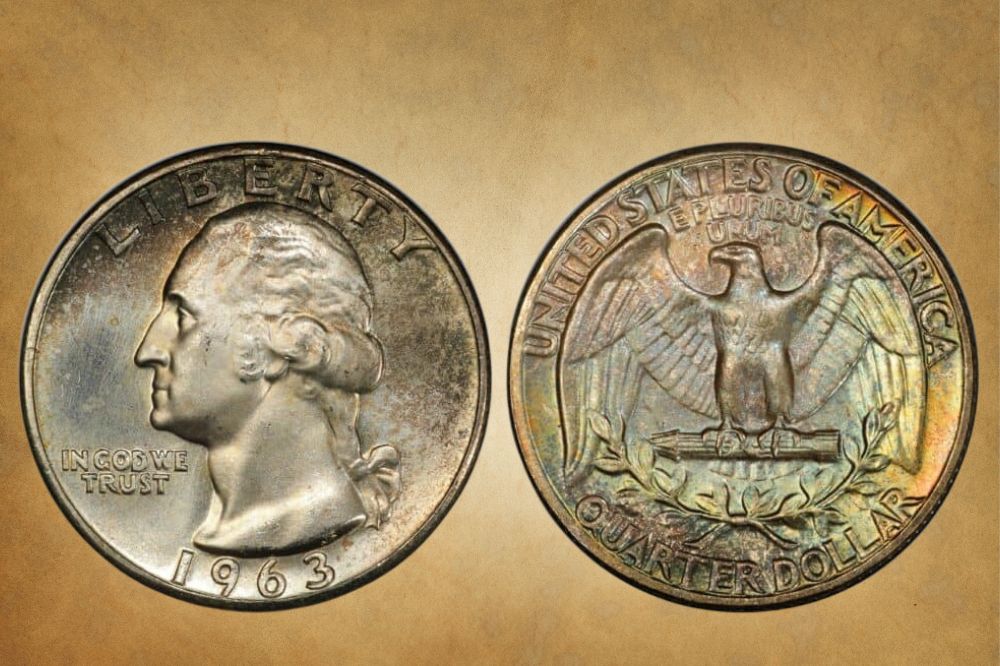
1963 was the penultimate year for the Silver Washington Quarter. Lots of these coins got hoarded for their silver content, prompting the US mint to switch to cupronickel-clad coins in 1965. And even today, people collect low-grade 1963 Quarters as ‘junk silver’. It’s an informal – and affordable – way of acquiring bullion. Let’s look at the 1963 Quarter Value.
1963 Quarter Value Chart |
|||||
| Mint Mark | Fine
(F 12) |
About Uncirculated
(AU 50) |
Uncirculated (MS 60) | Mint State (MS 65) | Proof (PR/PF 65) |
| 1963 (P) No Mint Mark Quarter Value | $5.89 | $6.80 | $8.02 | $15 | $11 |
| 1963-D Quarter Value | $5.89 | $6.80 | $8.02 | $15 | – |
1963 Quarter Value Guide
Several factors influence the value of a coin. These include its mint mark, mintage volume, rarity, grade, and errors. To confirm the condition or grade of your coin, you can send it to NGC (Numismatic Guaranty Corporation), PCGS (Professional Coin Grading Service), or ANACS (American Numismatic Association Certification Service). They charge a grading fee.
These assessors use variants of the Sheldon Scale that range from 1 to 70. Coins can also be categorized by their purpose. Regular strikes, also called circulation or business strikes, are for everyday use. The other categories are meant for archiving and collecting. These include proofs, uncirculated sets, and special mint sets (SMS). Each is coined in its own special style.
When several coins have identical features such as their mint mark, date, metal composition, or even their mint mistakes, they’re known as varieties. And a variety could be five coins or five million! So let’s start by looking at the value of coin varieties based on their minting location. For reference, MS is Mint State (60 to 70) while PR or PF refers to a proof coin.
Also, business strike coins that look like proof coins are graded as PL for Proof-Like, DPL for Deep-Proof-Like, or DMPL for Deep-Mirror-Proof-Like. Also, coins that have been altered by cleaning or dipping in chemicals to brighten the color have different grades e.g. Details (1 to 58), Brilliant Uncirculated (BU 60 to 70), Choice Uncirculated (63 to 70), or Gem (65 to 70).
1963 (P) No Mint Mark Quarter Value
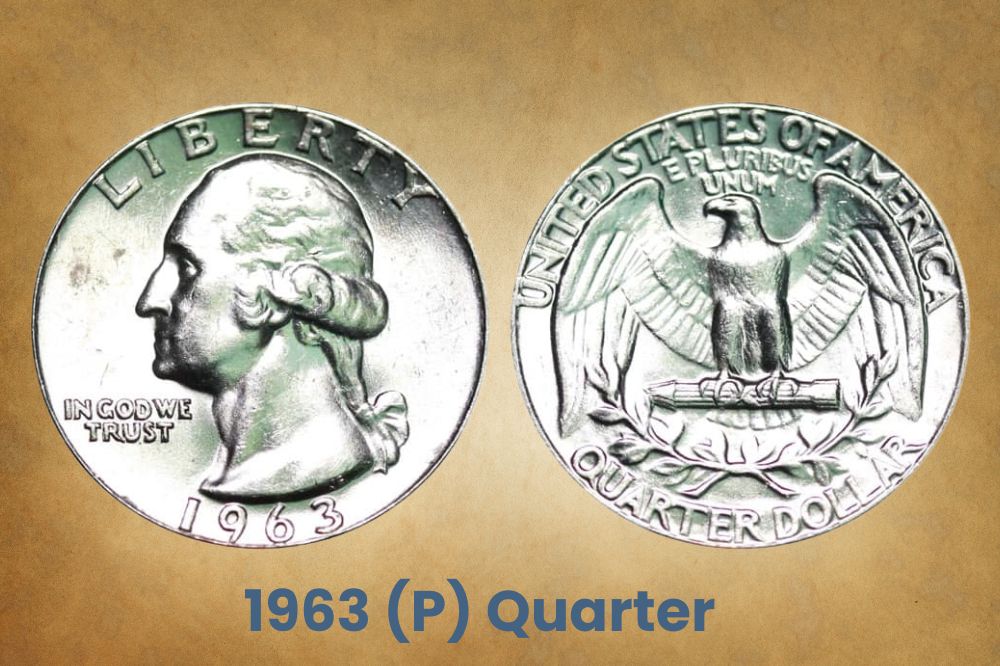
In 1963, the Philadelphia Mint made 77,391,645 Washington Quarters without mint marks, including about 3M proof coins. But we’ll look at the proofs separately. In February 2014, an MS 67+ sold for $11,163. It was down to $6,600 in March 2021 and PCGS has only graded 4. Their estimated value in 2023 is $9,000. In May 2022, an MS 67 PL was only $52 on eBay.
1963 (P) Type B Reverse Quarter Value
The Type B Reverse Quarter was minted using a die intended for proof coins. You can spot Type Bs or Type 2s because the gap between the E and S in States is wider than regular strike coins. In July 2021, an MS 67 sold for $1,020. And in October 2021, a VF 25 PL sold for $96 on eBay. PCGS has only graded three of these coins so far. They’re MS 64, MS 65, and MS 66.
1963-D Quarter Value
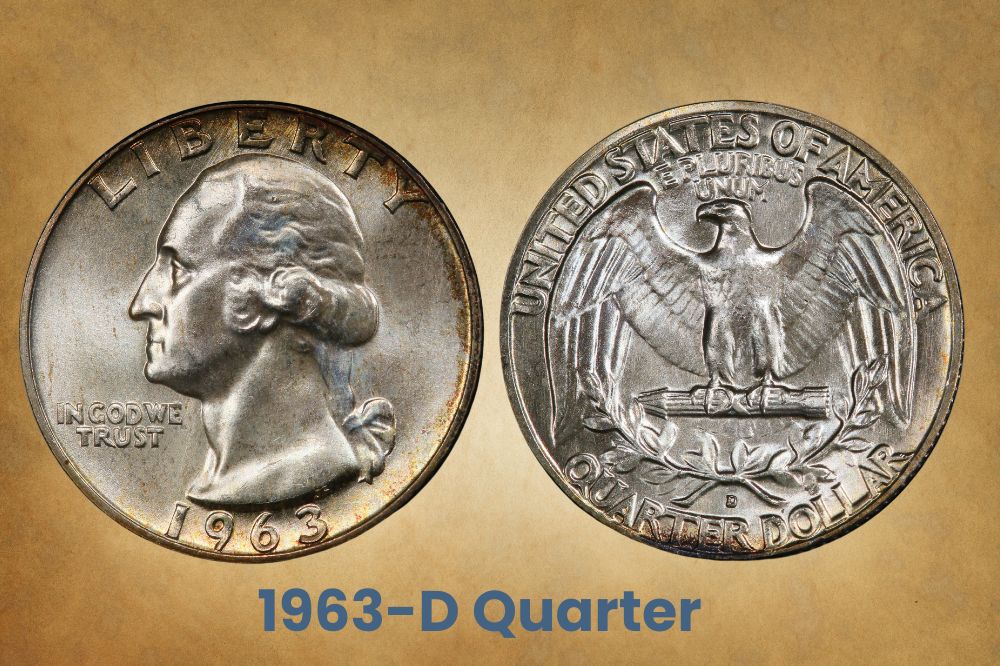
The Denver Mint made 135,288,184 Washington Quarters in 1963, and they all had the D Mint Mark. In August 2022, an MS 68 sold for $24,000. Only one is known. Half a step down, an MS 67+ sold for $3,360 in December 2022. They’ve graded 8 of these so far and the price estimate is $6,250 in 2023. But with 30 coins graded MS 67, their value is $1,050.
1963 (P) Proof Quarter Value
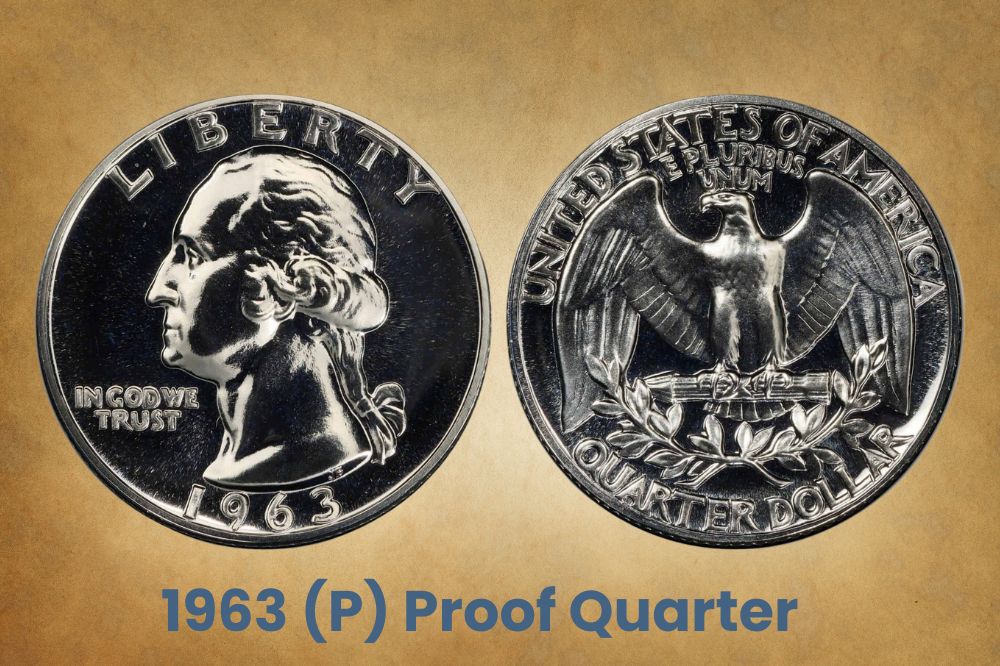
Proof coins can be mirror-like, matte, or reverse proofs. In 1963, the Philadelphia Mint made 3,075,645 Proof Quarters using the standard acid-pickling technique. They were mirror-like proofs with a highly reflective field and a frosted device. To get that mirror polish, planchets are burnished before striking by tumbling in a vat of 6mm stainless steel balls aka satellites.
The proof dies are also scrubbed with horsehair brushes to make the field shiny, then dipped in acid to frost the device. This frosting gets weaker every time the die strikes, so the first 50 to 100 are graded Deep Cameo (DCAM) by PCGS or Ultra Cameo by NGC. The next hundred or so will be graded cameo while the rest are regular proof coins. A copy goes to the archives.
In August 2014, a PR 67 sold for $3,405. But a PR 70 was down to $1,680 in June 2021. They’ve graded four of these. In May 2012, a PR 69 CAM was $299 but it was $94 in July 2021. In July 2010, a PR 69 DCAM sold for $805 while the price in June 2022 was $720. Since PCGS has graded 133 coins at PR 69 DCAM, they estimate its 2023 value at $275.
Related Posts: 17 Most Valuable Modern Quarters Worth Money
1963 Quarter Errors
When a coin is being minted, the artist uses a sketch to make an 8” model that gets shrunk in a reducing machine. This process takes several days to produce a steel master hub, which is later used to make master dies, working hubs, and working dies. A mint mark is added to the working die which then strikes a planchet to make a coin. Until 1989, it was done manually.
All these steps need multiple strikes, so the die, planchet, or the mint mark hand-puncheon might shift between strikes. This mid-strike movement can cause misalignment errors like doubling, tripling, or quadrupling. You can also get errors where coins are struck on blanks intended for other denominations, or on coins that already have designs from prior minting.
1963 (P) Quarter DDO
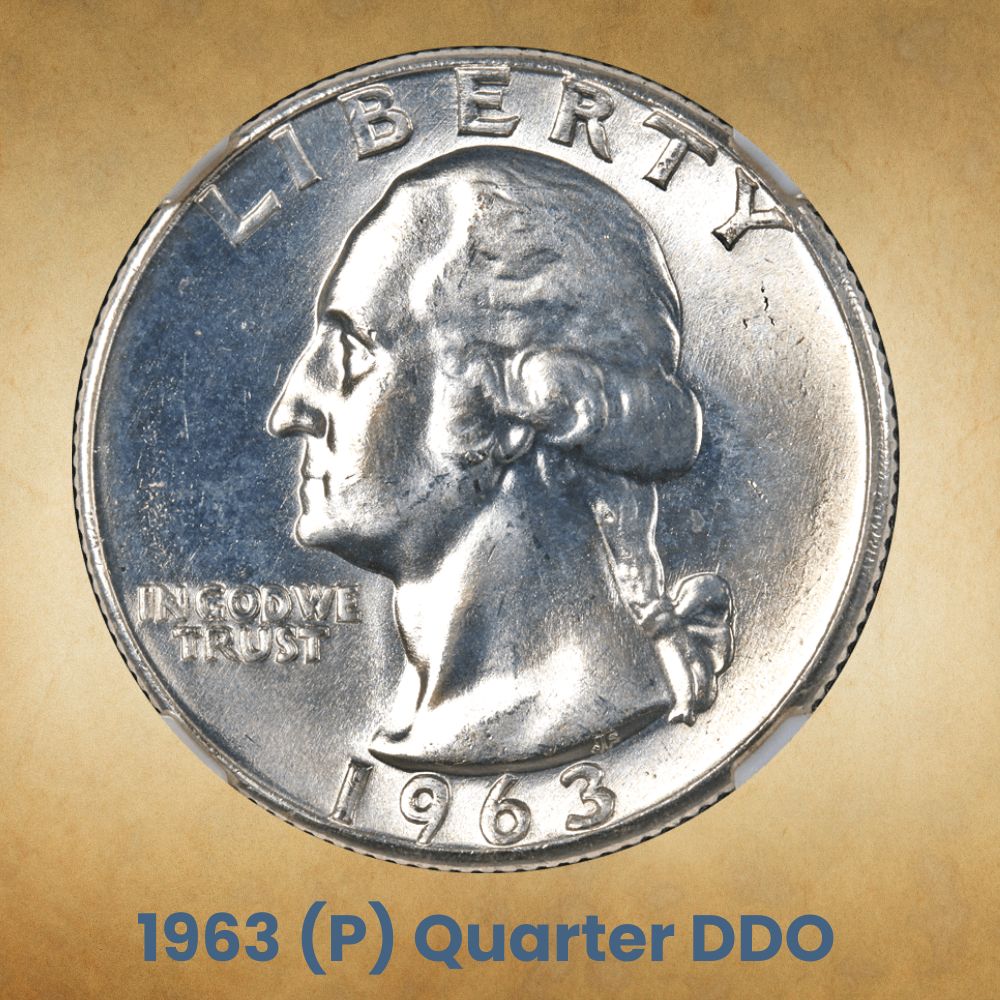
DDO means doubled-die obverse. It’s when the die shifts in mid-strike so the second strike hits a slightly different spot. This error is copied on every coin that die strikes, causing a variety. In January 2022, an MS 67+ graded by NGC sold for $1,680. But in October 2015, an MS 67 graded by PCGS sold for $999. They’ve only seen one, so its 2023 estimate is $1,100.
1963 (P) Quarter DDR
DDR means doubled-die reverse. It’s similar to a DDO, but this time, the doubling occurred on the reverse die. In March 2018, an MS 65 sold for $720. The highest known grade is MS 66+ and PCGS has only received one submission so far. They estimate its 2023 value at $1,500 while an MS 65 is estimated at $750 because they’ve received 8 of those for grading.
1963 (P) Proof Quarter DDR
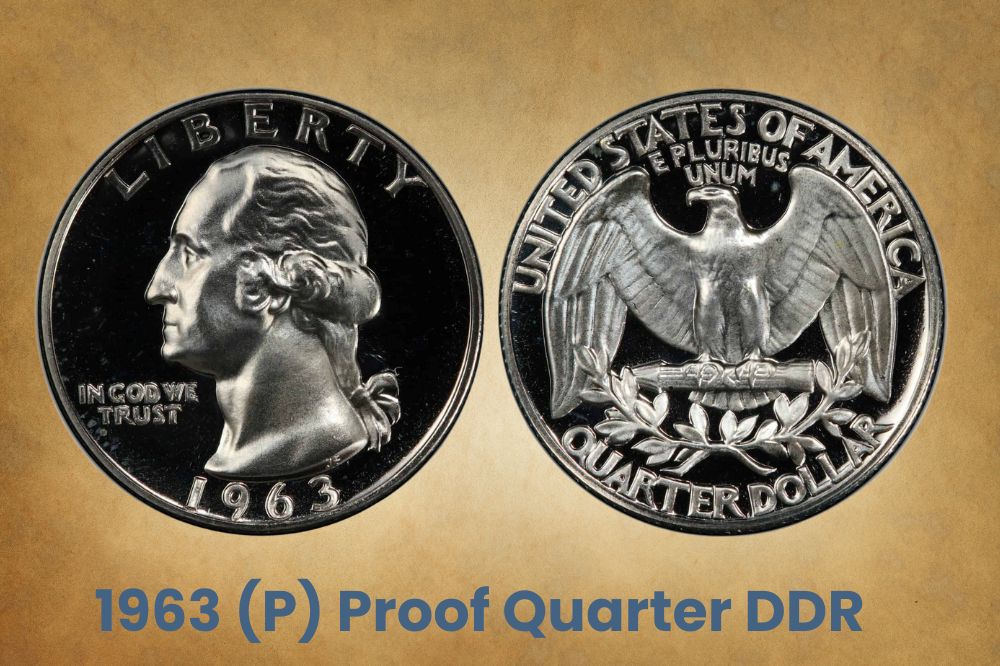
The mint typically uses different dies for proofs and regular strikes, since the proof dies have to be polished and pickled to achieve the frosted device and mirrored field. So while DDR is a standard error, a Proof DDR is a separate coin variety. In March 2018, a PR 68 DDR sold for $950. PCGS has only graded three of them so far and estimates their 2023 value at $750.
1963 (P) Quarter DDO + DDR Error
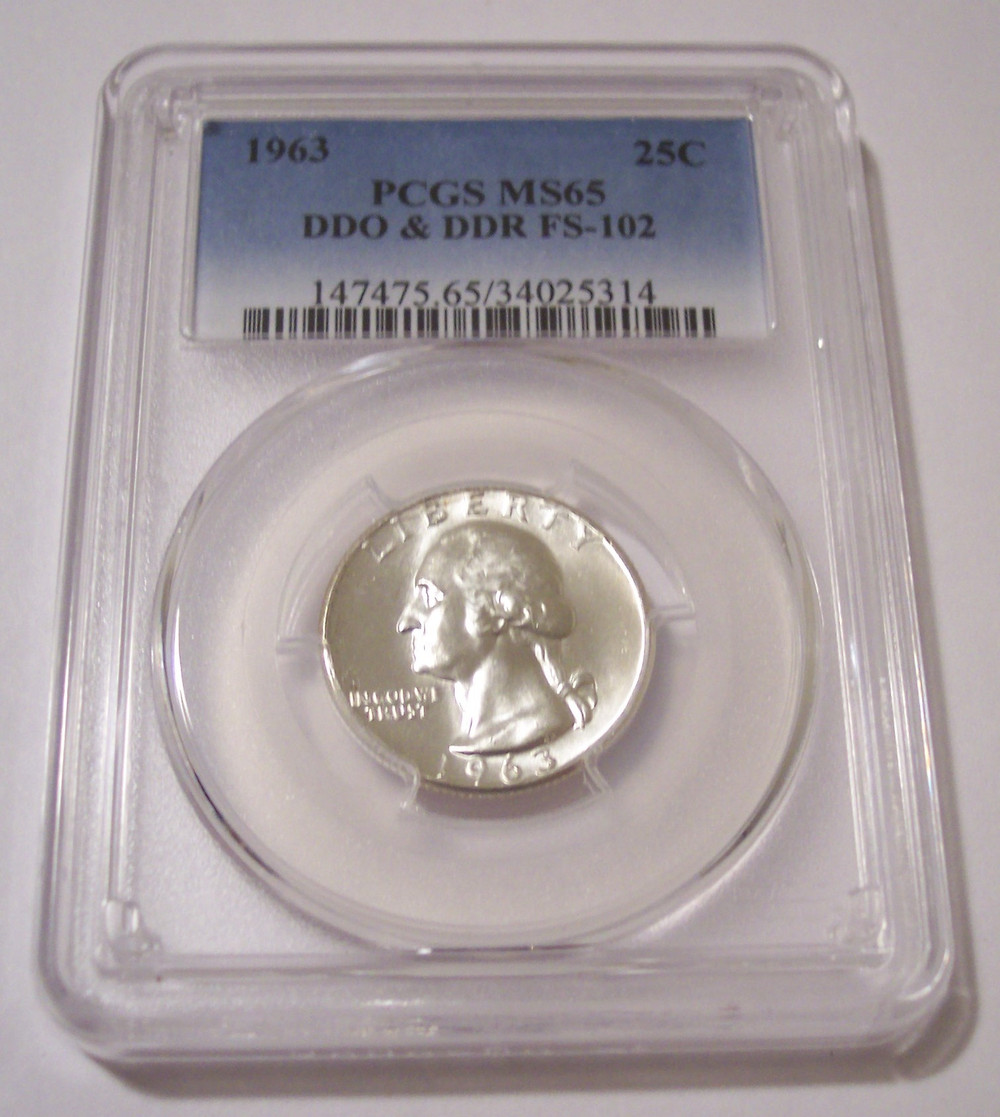
If a coin has more than one error, its value can go up exponentially. And this coin variety has doubling on both the front and the back. In August 2014, an MS 66 sold for $550. So far, MS 66 is the highest known grade. And since PCGS has spotted four of them, they still estimate the value as $550 in 2023. Half a step down, the 2023 price estimate for an MS 65+ is $325.
1963-D Quarter Overstruck Error on a Dime
When a coin is struck on another coin that already passed through the coin press, it’s called an Overstruck Error. It might also be called a Double Denomination Error if the earlier coin was a different denomination. It shows designs from both coins, so it’s an easy error to spot. This one was overstruck on a 10c coin so the rims are truncated. In MS 62 it sold for $2,100.
1973-D Quarter Struck on a Dime Planchet
Is there a difference between this mint mistake and the one above? Yes. The earlier one was a double denomination error, so the dime had already been struck. But this one is a wrong planchet, meaning it was struck on a blank disc intended for a dime. The rims are similarly sliced off though since dimes are smaller than quarters. In AU 55, this quarter sold for $675.
1963-D Quarter Struck on a Penny Planchet
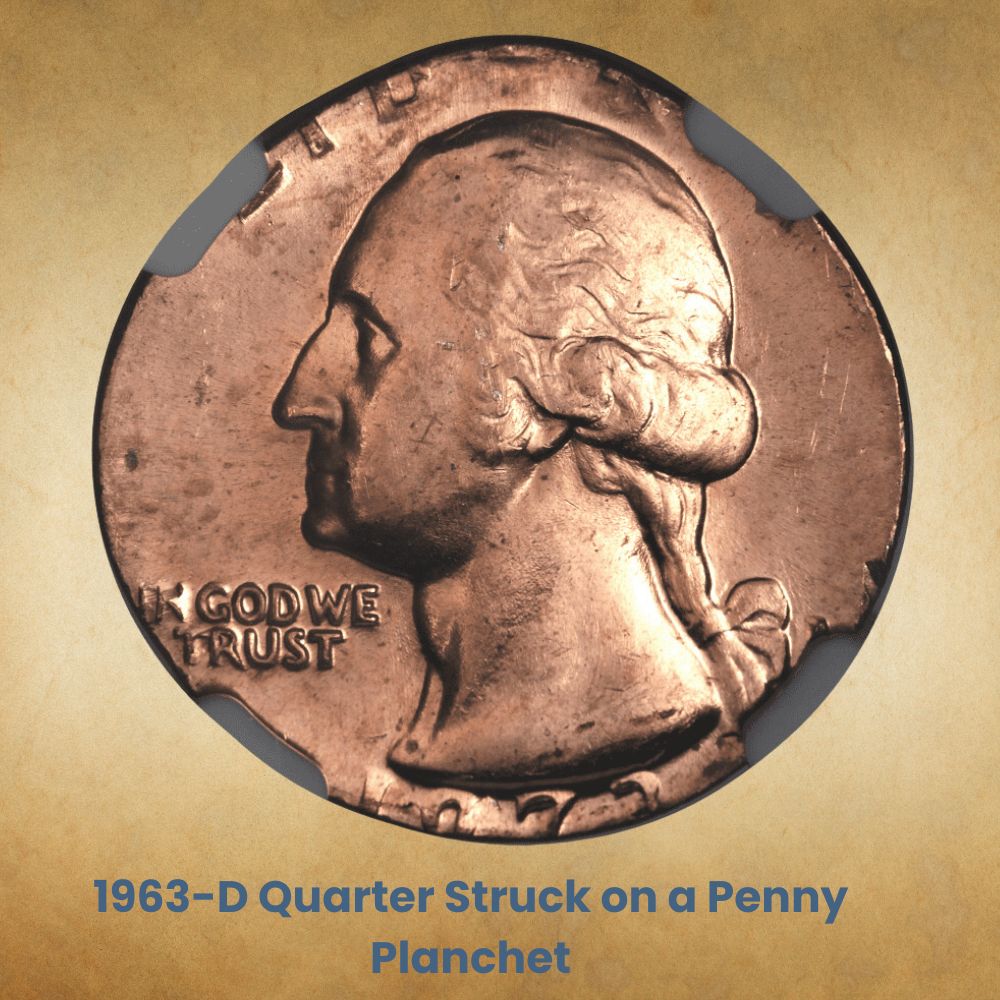
This coin was struck on the wrong planchet as well. But this time, it was a blank intended for a penny so the error is much more dramatic. The coin has that trademark reddish color that comes from its copper content. And since 1c coins are smaller, some of this quarter’s features got sliced off the coin, and it weighs 3.03g instead of 6.25g. In MS 65 BN, it sold for $1,300.
Related Posts: 16 Most Valuable Quarter Errors
History of the 1963 Quarter
Washington Quarters were introduced in 1932 to celebrate the 200th anniversary of George Washington’s birth. He was one of the Founding Fathers and served as the 1st President of the United States. Interestingly, he didn’t like the idea of being on a coin, even though this practice was common in many colonies. He advocated for symbolic images of our freedom.
That’s why from 1792 until 1909, American coins featured ladies posing as Lady Liberty. In 1909, we put the first recognizable person on a coin – Abraham Lincoln. He was the 16th US President and we put him on the penny to commemorate the 100th anniversary of his birth. Washington then became the second person on a coin, though he was already on the $1 bill.
Washington was initially designated the Half Dollar, a coin that would only be minted for a year. But Congress preferred to place him on a Quarter and keep him there forever. And he still graces the heads side of this coin, though the reverse has changed multiple times. The Washington portrait used on the 1963 Quarter was sculpted by John Flanagan back in 1931.
Related Posts: Top 10 Most Valuable Bicentennial Quarters Worth Money
How to Identify the 1963 Quarter?
When you’re describing the features of a quarter, you need some basic technical terms, so let’s discuss some of the most common ones. The heads side of a coin is called the obverse while the tails side is called the reverse. The thin sides that you flip are called edges and they sometimes have ridges called reeds. The obverse and reverse may also have denticles.
These are the tooth-like beads on older coins. The words on a coin are called legends or mottos while the images are called devices and the background is called the field. The blank discs that are used to make coins are called planchets, and they’re punched in a blanking machine. Modern coining methods make the process much faster, but first, the features.
The Obverse of the 1963 Quarter
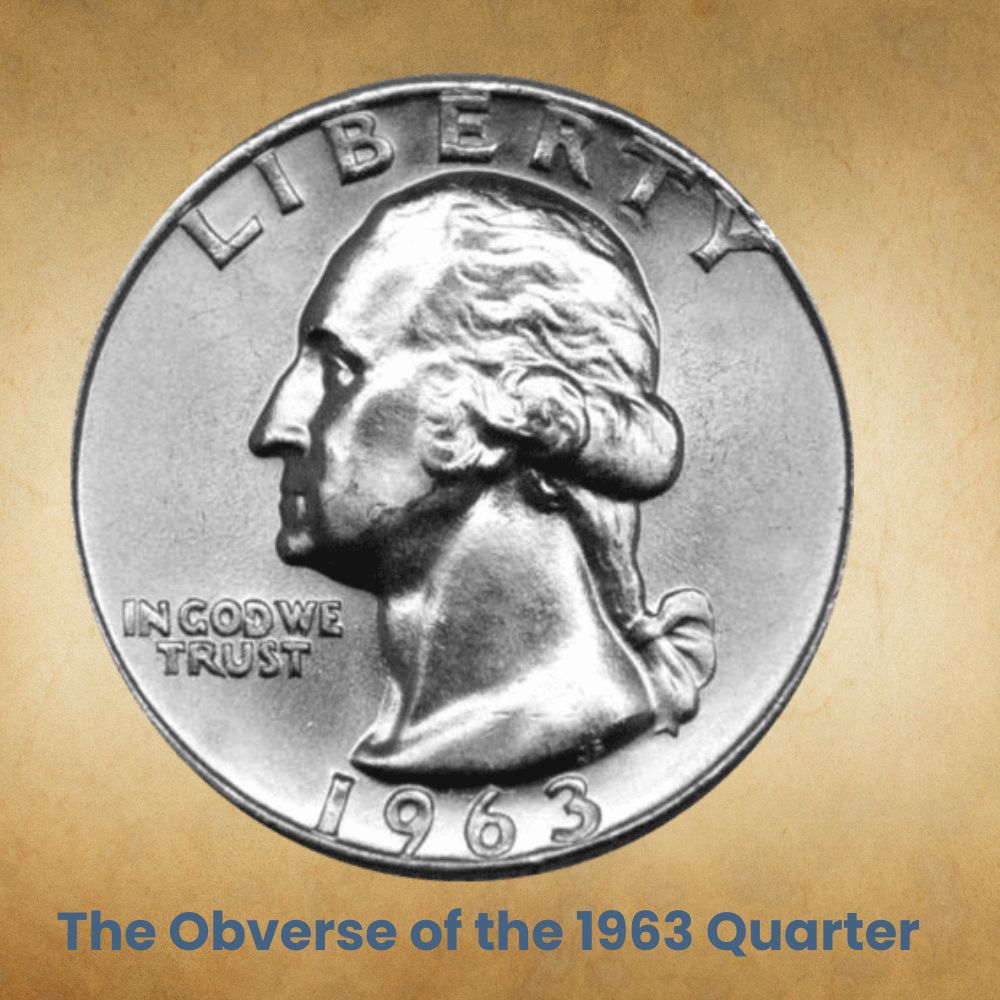
The obverse (heads side) of the 1963 Quarter has a profile of George Washington facing left. It was designed by John Flanagan so his initials, JF, are towards the right of the neckline cut-off. The legend Liberty is on the upper rim, above Washington’s head. The motto In God We Trust is on the left, under his chin, and the mint date runs along the lower rim of the coin.
The Reverse of the 1963 Quarter
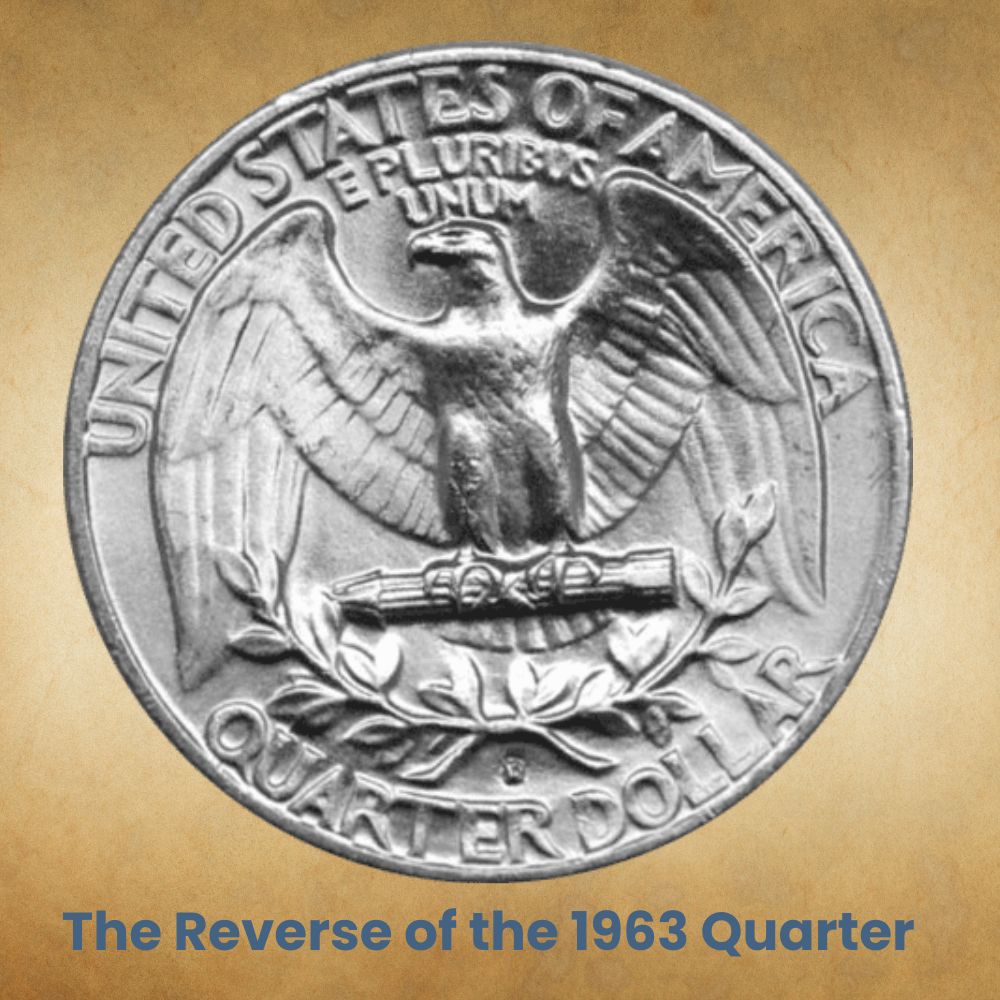
The reverse (tails side) of the 1963 Quarter bears an eagle with its wings outstretched. United States of America runs along the upper rim, with E Pluribus Unum below it. The eagle has a bundle of arrows in its talons and a pair of olive branches curved under its feet. The mint mark is under the wreath, and the denomination, Quarter Dollar, runs along the lower rim.
Other Features of the 1963 Quarter
The 1963 Quarter was 90% Silver and 10% Copper. Most American coins are hardened with at least a little copper. These include the specie coins (silver and gold) because those metals are much softer. The coin was 24.3mm in diameter and had a reeded edge. It weighed 6.25g and by law, it contained exactly half the mass and silver content of a Silver Half Dollar coin.
Related Posts: 20 Most Valuable State Quarters Worth Money
Is a 1963 Quarter Pure Silver?
No, but it’s mostly silver. Its metal composition is 90% Silver and 10% Copper for hardness.
Related Posts: 21 Most Valuable Quarters In Circulation

1963 D quarter I have has a dark blue on the ridges eagle side some on head side very good shape for being 60 years old
I have found a 1963 quarter that is a bright silver color, no copper showing on the edge and it feels very light. Trying to find out more information and see what it would be worth.